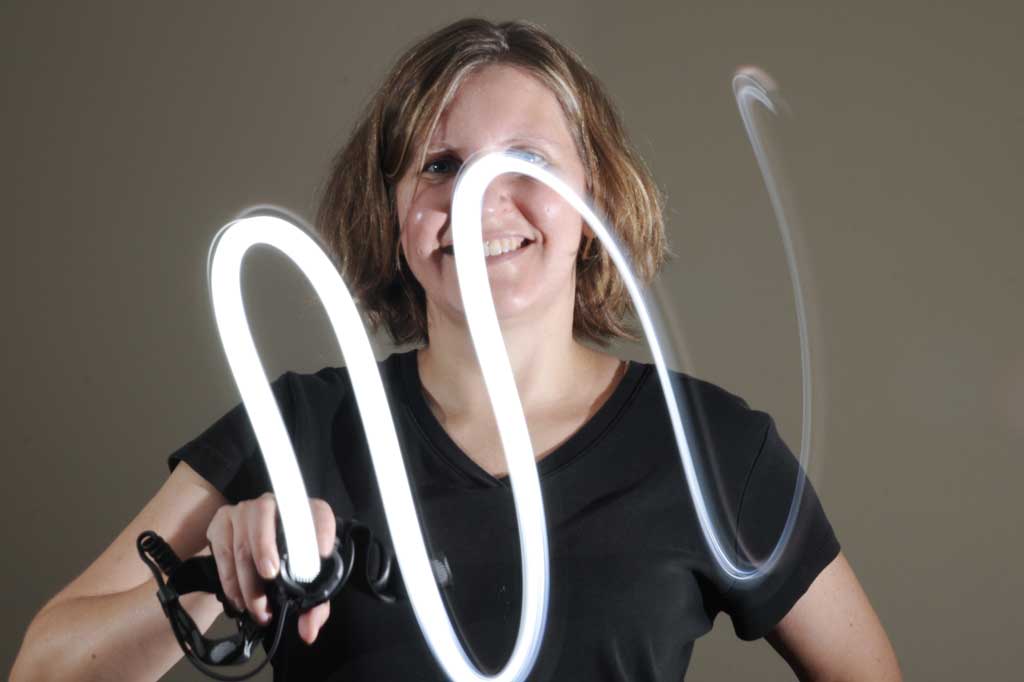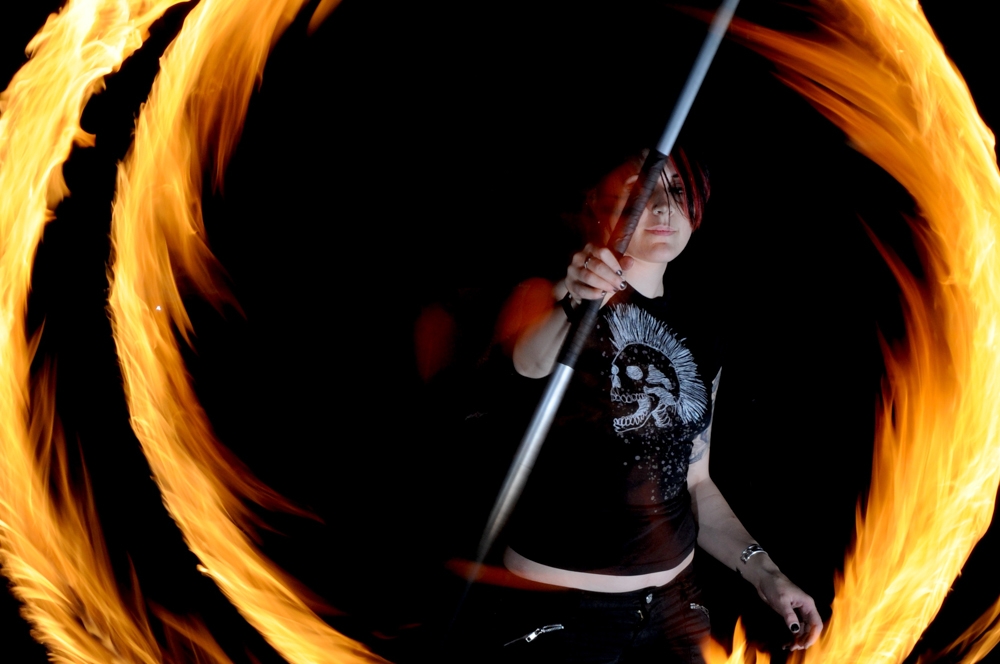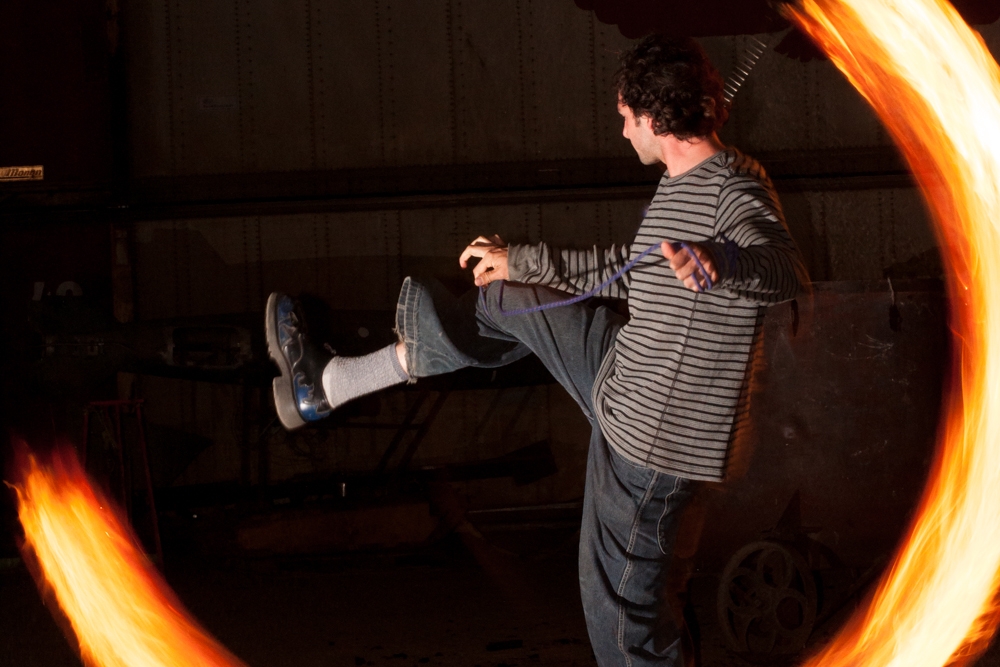Rear sync flash photography

Rear-sync flash is when a camera's flash fires at the end of a long exposure rather than at the beginning of a short exposure. The flash fires right before the shutter closes, capturing whatever that image happens to be at that moment, in addition to anything that might have been bright enough to burn into the camera during the exposure time (such as the bright headlamp shown above).
Typically, it's used to create motion effects with a bright "frozen in time" portion of the image. It's also used in fire spinner photography, to create trails of light/fire around an image of a non-blurry person. The portion of the image that's darker appears not to move because it isn't light enough to register until the final flash goes off.

How to set up remote-triggered strobes
I used a Nikon D200 and two strobes, a Speedlight SB-600 and a Speedlight SB-800.
- On the Nikon D200, in the menu settings, I scrolled down to the pencil, Bracketing flash, Flash control for built-in flash menu. In that menu, I scrolled down until "Commander mode" was selected.
- Within the "Commander mode" menu, I made sure that Built-in flash was set to M 1/128, and that Group A and Group B were both set to M 1/1. By setting the built-in flash to the lowest power I make sure that most of my light comes from my strobes. This is a matter of taste.
- On the SB-600, in order to get to the Commander mode menu, I held down the Zoom and "-" keys simultaneously. From there I made sure Channel 1 and Group A were selected.
- On the SB-800, in order to get to the Commander mode menu, I held down the Select (center) key for a few seconds. I chose Channel 1 and Group A for this strobe also.
- I then set the Nikon D200 to Rear Sync mode, by holding down the flash menu button to the left of the on-camera flash and using the scroll wheel until "rear" came up on the display.
- I set an exposure for two seconds and positioned my strobes.
- Ta dah! The on-board flash goes off, I can hear the shutter open right away, then two seconds later the slave flashes go off.
What it looks like
The above self-portrait shows my test with two-second exposure and a slave strobe on each side (SB-600 and SB-800). I'm moving a small headlamp around in front of me. Below is a firespinner photo taken at night with more powerful flashes but very similar setup.

The shutter was open for a few seconds, long enough for the bright fire to be captured, but not for his dark figure to show up; my flashes went off at the end capturing everything and "freezing" the picture. See the rest of the fire spinners.
Cave photography and off-camera strobes
Cave photography relies heavily on slaves and off-camera strobes. Below is a photo of a large cave room lit from several powerful one-use bulbs triggered by the slave in the main camera.

The flashes in this photograph were 5B one-use bulbs, which made for strong 360-degree light, although unfortunately they had to be thrown away afterwards. Additionally, the slaves sold for cave rigs are often individual devices made sturdier to withstand wet and grime. 5B bulbs were about an inch long; some bulbs were fist-sized. Bulbs were encased in plastic so that the shards of exploding glass/metal did not cause a problem. They often were problematic because a stray shred of light might trigger the slave, causing all the strobes to go off, and then new ones would have to be painstakingly installed all over the cave again.
Nowadays cavers are more likely to use electronic strobes, both for their convenience, and because suppliers of conventional bulbs are no longer producing them. See the Mona Island page for more photos lit with off-camera bulbs.
